An increasingly popular country to visit, Poland has risen from hard times to become a beautiful and fascinating destination to discover. The country is filled with awe-inspiring architecture, historical treasure troves, the pristine coastline of the Baltic Sea, and a huge range of diverse flora and fauna.
I personally loved this proud and unique country when I visited, but I will try to keep it to a minimum here and present just fifteen of the best and most beautiful places to visit in Poland…
1. Poznan – one of the most stunning cities to explore in Poland
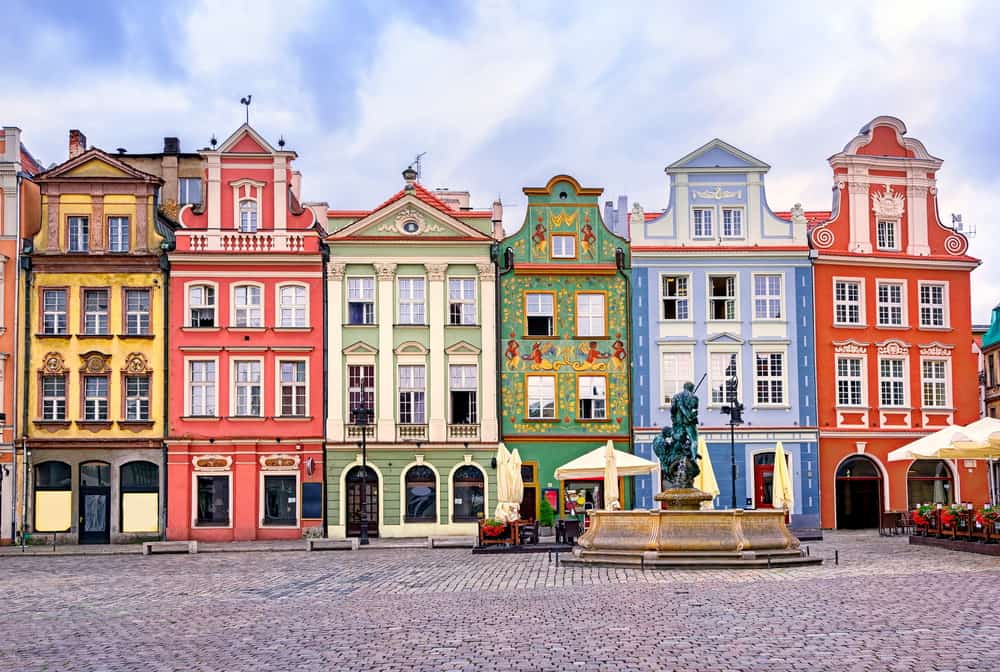
Settled at the mid-point between Warsaw and Berlin is the vibrant and quaint Poznan where Europe’s youngest castle is located. Poznan has an ever-present warmth (despite the characteristically chilly winters.)
Steeped in culture and hundreds of years of history, there is a wonderful atmosphere here.
There is a creative vibe bring everything to life here from street art (Poznan is the home of graffiti-artist Noriak, whose ‘Watcher’ observes from every corner of the city) to Stary Rynek, which is home to the city’s major attraction since the thirteenth century – the very beautiful Renaissance town hall.
There are also hundreds of excellent independent eateries, globally recognised festivals, from the oldest violin competition in the world, to an international ice sculpture celebration.
There is a sense of familiarity to the place, perhaps due to its size which makes it perfect for discovering by bicycle or on foot, and the lush greenery adds to the gorgeous scenery.
2. Krakow – one of the famously best places to visit in Poland

Poland’s former royal capital, Krakow, has medieval splendor and a youthful vitality and is definitely one of the must-see places to visit in Poland. Relics from every significant architectural era remain as testament to the many lives the city has lived.
It is a decadent patchwork of Romanesque, Gothic, Renaissance, Baroque and Art Nouveau – each of which has left traces of their reign.
While it has handed its title of political capital to Warsaw, many hold Krakow in esteem as Poland’s cultural capital.
Whether you’re looking to explore Wawel Castle – a stunning symbol of Polish independence as well as being beautiful immerse yourself in the warmth of Kazimierz (Krakow’s former Jewish quarter,) or enjoy a tasty lody in the largest medieval square in Europe, there is an abundance of reasons to lure you into the city’s charms.
From atop the taller of St. Mary’s Basilica’s two towers, marking the turn of every hour, a simple, five-note melody floats: the Hejnal Mariaki. The famous signal has been played daily since the fourteenth century and nobody is quite certain who, or when it sprung from.
It has, however, become symbolic of Poland as a whole, and the trumpeters must undergo years of highly specific training in order to take their place at the top of the tower.
3. Tatras Mountains – a stunning destination to explore in Poland

Forming a natural wall between Poland and Slovakia, the Tatras Mountains dominate a landscape that could have fallen from the pages of a fairy tale.
Exploring is restricted to designated paths due to the dangers of the terrain, and the ridge can be crossed only by foot (or skis during the winter).
Its coverage is not especially vast, but the peaks are huge, with astonishing biodiversity; the Polish domain alone sustains over 10,000 botanical and animal species, including the brown bear, lynx, and golden eagle as well as dwarf mountain pine, sprawling spruce forests, fir, edelweiss, and crocus.
The highest peak of the Polish fragment (constituting just 1/5 of the range) is the Rysy apex, ascending 8200ft above sea level – a point of elevation sure to leave an imprint that will linger long after the descent.
4. Gdansk – one of the prettiest cities in Poland
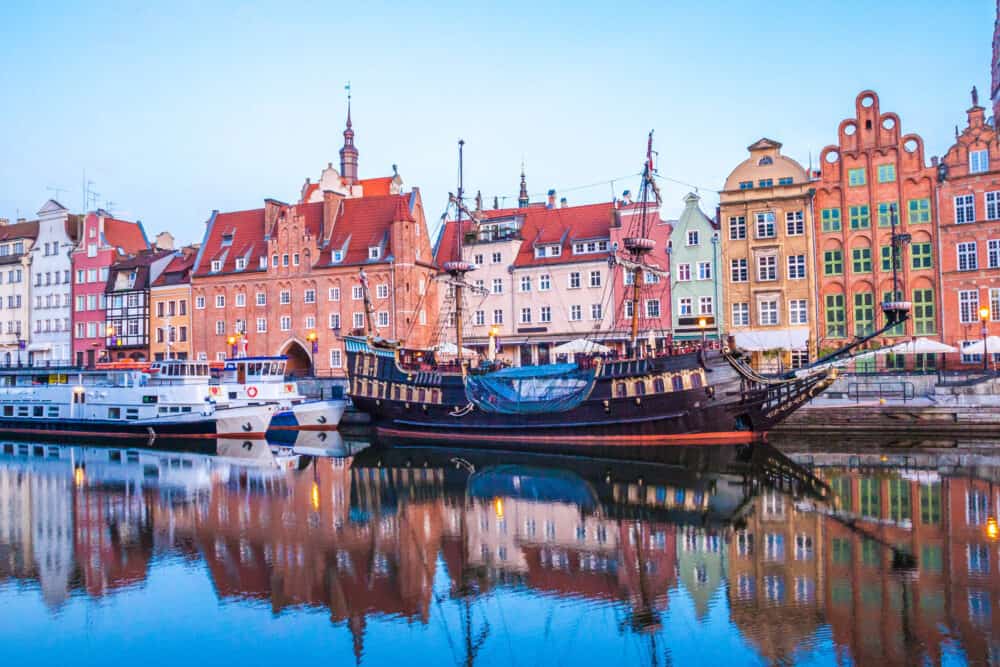

Nesting at the Vistula River’s mouth, which melts seamlessly into the Baltic Sea is Gdansk – a land carved from centuries’ worth of maritime hustle and bustle with a chequered history.
The fight for control of Gdansk lit the fuse of the Second World War, by the end of which the city was almost totally obliterated. Under Polish rule, many of the ruins were diligently resurrected and Gdansk was formed from Danzig’s ashes.
Most of the major attractions can be found in the Main City: a colourful, cultural centre dripping with historical relevance. Within this area, you can find a brilliant, bronze ode to the city’s mythic guardian, Neptune, perched atop a fountain crafted in the seventeenth century.
This precious artefact was concealed for the duration of World War Two, and replaced only when peace was attained. A place of profound beauty, Gdansk is a bright fusion of modernity and history, merging a contemporary waterfront, ancient stone gates, unspolit wilderness and an industrial edge all gathered beneath a cool swell of Baltic breeze.
Follow coiled, cobbled lanes to Gothic churches, a Romanesque and Rococo cathedral, hidden squares, and the bold may even dabble in a spot of chilly sea-swimming.
Beyond the energy of the centre dwells the tranquillity of the Sobieszewo Island, from which springs a magnificent array of protected flora and fauna, from sea holly to racoon dogs and many of assorted birds. Easily one of the most beautiful places to explore in Poland.
5. Sopot Beach – one of the best beaches in Poland

A stone’s throw from Gdansk is the opportunity to sink your toes into the several miles of fine, silver sand that comprises the glitteringly pretty Sopot Beach.
Its wooden pier (the longest in Europe) provides a simple artery directly into the vast, yawning sea. A few lungfuls of Sopot’s bright, clean air will leave you revitalised – a throwback to its roots as a spa town, now transformed into an elegant, coastal community.
6. Pieniny National Park – a scenic beauty spot in Poland
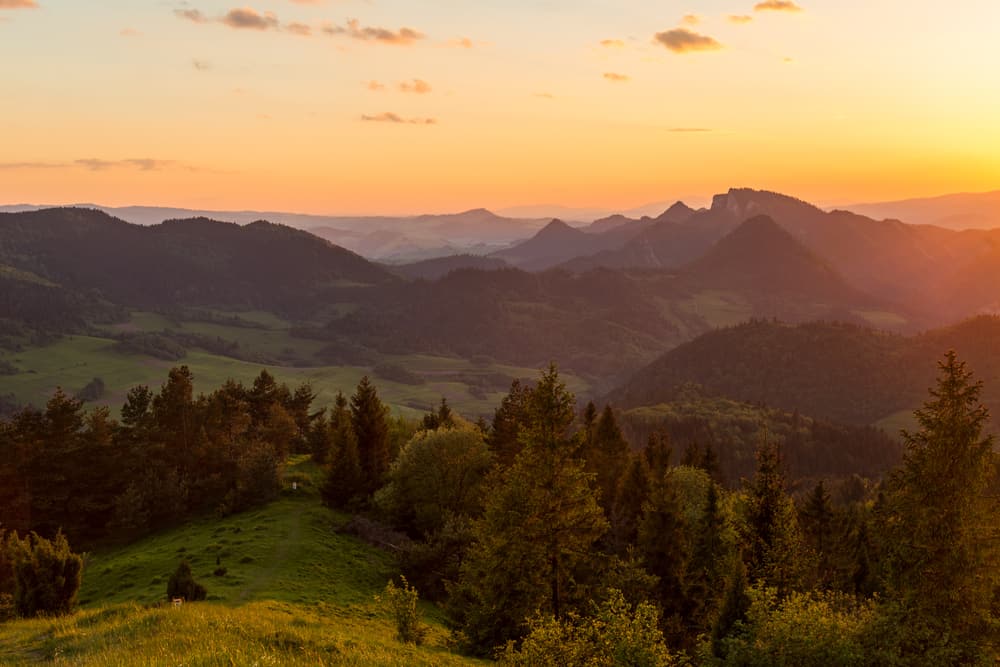
The seemingly vertical walls of the Peniny Mountains plunge down to the Dunajec River, within whose basin Pieniny National Park resides.
Small but potent, the park supports masses of life, including 640 varieties of mushroom; its human-carved meadows are some of the most fruitful in all of Poland, hatching 30-40 species of flower for each square meter.
About 6500 animal species are known to roam the land, with the strong possibility of more still unseen.
The range’s apex predator is the lynx, and along the banks of the river, otters frolic. Aside from mammals, there are a great diversity of birds, reptiles, fish and amphibians – a concoction certain to swipe the breath from many chests.
For an alternative to walking trails, you may wish to seize the opportunity to ebb down the Dunajec by raft: an exciting, yet soothing means of transport.
7. Wroclaw – one of the oldest and the most beautiful cities in Poland
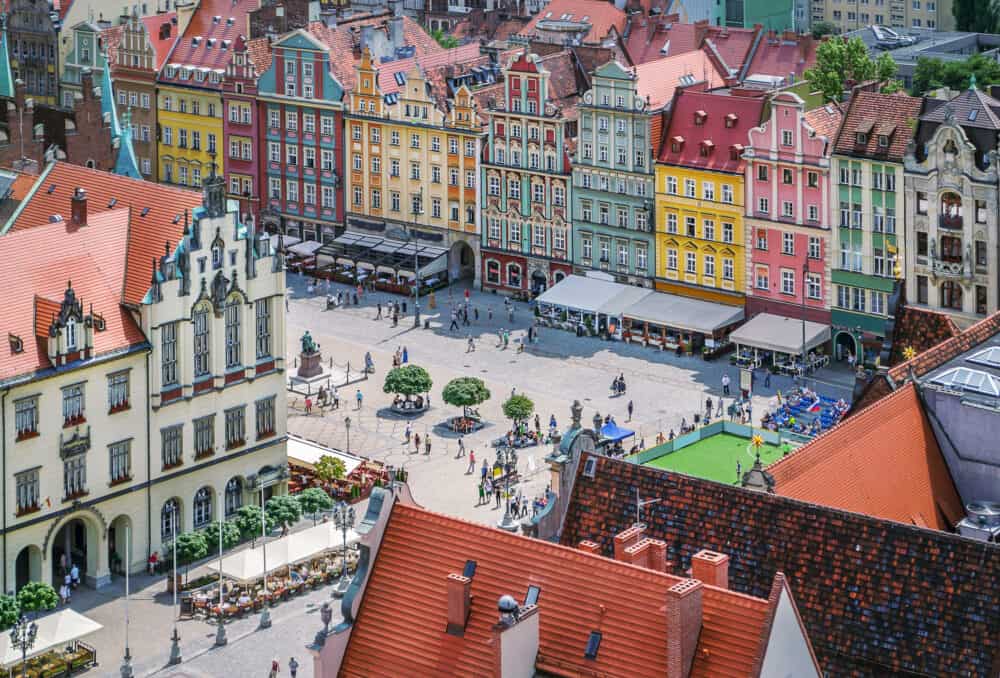
Surrounded by the Oder River is the elegant and ethereally beautiful Wroclaw; adorned in architecture that could easily inhabit folklore, it is brimming with art, history and a diverse medley of cafes, restaurants, and bars to fuel your exploration of the largest city in Western Poland.
Wroclaw’s origins are in Ostrow Tumski (Cathedral Island.) Originally a garden, it has been transfigured into a place of profound beauty and architectural significance, full of powerfully symbolic monuments, sculptures, gardens, and bridges.
The Cathedral of St. John the Baptist was Poland’s first brick building, erected in the thirteenth century upon the echoes of an earlier church, and its twin spires offer a panoramic view of the city.
One of Wroclaw’s curios is the dwarves that speckle the streets -a symbol of the anti-communist collective, Orange Alternative.
8. Slowinski National Park – known for its huge, shifting sand dunes
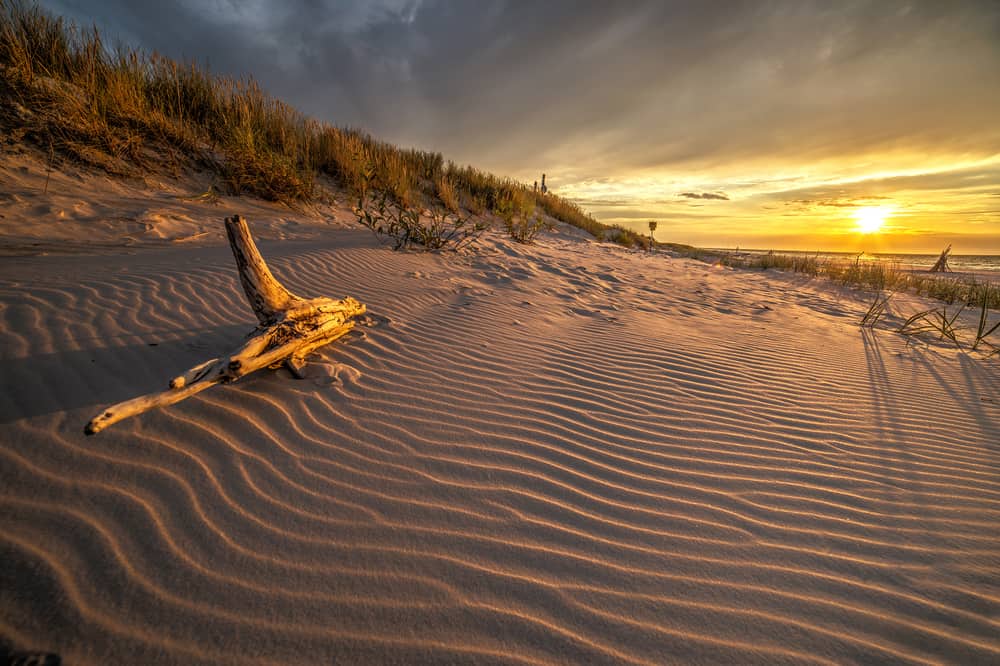
Transfigured by the Baltic Sea, in the Pomeranian region of Northern Poland, is the remarkable Slowinski National Park.
Perhaps the most notable features of this exceptional destination are the shifting dunes; moving at an average pace of 32ft per year, they keep the landscape in a state of constant animation.
Their journey conceals and unearths: fossilised trees reach up through the sand, long-lacking the green that once clung to their boughs.
These colossal, sandy mountains can be viewed from many vantage points within the Park, but one of the most stunning is Lake Lebsko, upon whose shores is an observation point from which the dunes can be seen.
Slowinski National Park is a World Biosphere Reserve, meaning that its wonderfully diverse flora and fauna are under protection – so much so that much of its terrain is inaccessible to humans.
Consisting largely of marshes, meadows, and woodland, the biosphere is home to many unique plants and rare bird species such as the black stork, white-tailed eagle, and eagle owl.
9. Warsaw – the capital and largest city of Poland

At the heart of Europe is Poland’s extraordinary capital city, Warsaw, whose Old Town exudes an old-fashioned feeling; its buildings, however, are not as old as they seem.
Following terrible damage during WWII, the city was rebuilt from the ashes using the accomplished (and awesomely accurate) paintings of Italian artist Canaletto for reference.
Since this decisive reclamation of identity, Warsaw has blossomed into a major cultural, economic and academic hub. It is also perhaps the only place in the world where you’ll witness a mermaid wielding a sword and shield.
These symbols are dotted around the city, but the ‘official’ syrenka can be found at the centre of the Old Town square. Aside from its many architectural and cultural delights,
Warsaw is the culinary capital of Poland, offering everything from Milk Bars to Michelin-starred restaurants, and traditional, independent bakeries.
10. Zamek Ksiaz – the largest and most attractive castle in the Silesia region
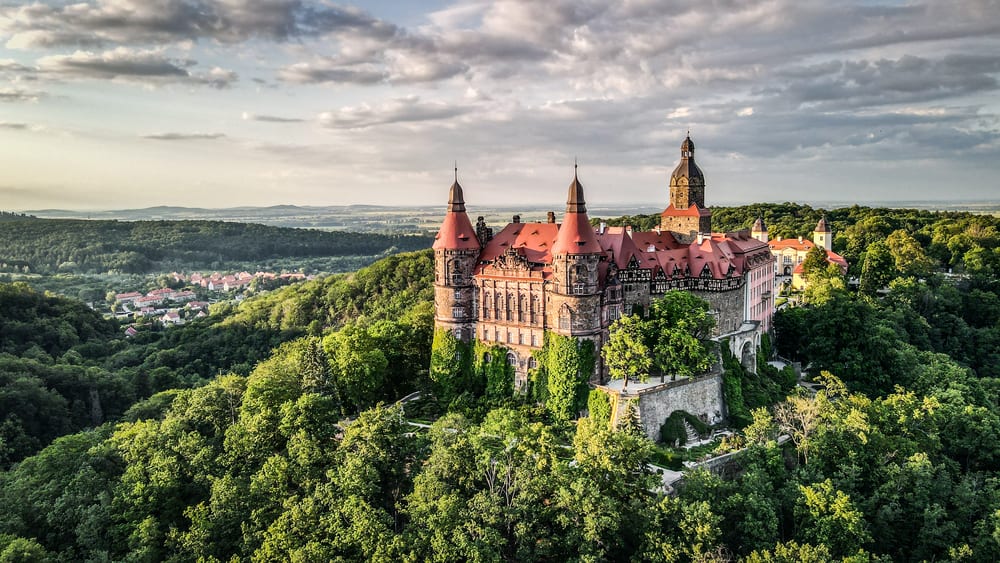
Obscured by the thick, lush woodland of the Owl Mountains is a castle seemingly spun from the threads of legend.
Perched upon the highest rock around, the blushing, dusk-drenched facade of Zamek Ksiaz belies the sinister plots once hatched within.
Though the tunnels and chambers are magnetic in their appeal, what dwells above the ground is worth exploring too; combining Gothic, Baroque, and Neoclassical elements, the exterior and interior are equally awe-inspiring, and the Palm House contained within the castle’s complex is home to over 250 species of plant!
The surrounding forests are not only beacons of natural beauty, but also draw in treasure hunters near and far to try their hand at unearthing the hidden Nazi gold.
11. Swinoujscie Beach – a great spot for all the family
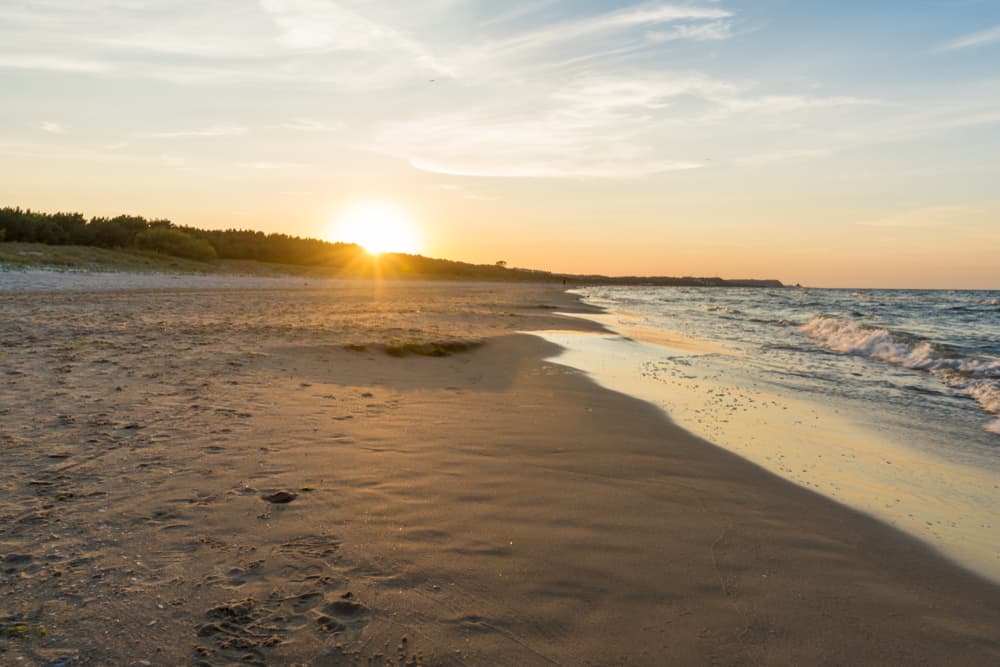
On the Island of Uznam, Poland’s most scopic seaside destination is Swinoujscie Beach, whose fine, golden sands stretch for miles, bordering the blue blaze of Baltic Sea.
Protective dunes obscure all visions of the town giving the space a feeling of intimate wilderness.
The size of the beach ensures a relaxed atmosphere, even on busier days, and an array of water sports are on offer for those seeking a taste of adventure.
One of the most alluring sights is that of Swinoujscie’s official emblem, the Beacon of Stawa Mlyny; the 33ft high windmill-shaped column acts as a guide for ships departing the Baltic to drop anchor in Swinoujscie.
Towering above Wolin Island at a remarkable 213ft is Poland’s largest lighthouse (and the tallest brick lighthouse globally).
The structure suffered damage during WWII, triggering a demand for its destruction, but the German Keeper at the time refused the order, and the yellow-brick beacon remained active, standing tall as ever following reconstruction. The neighbouring keeper’s quarters are now home to a lighthouse museum.
12. Karkonosze National Park – a haven for outdoor lovers
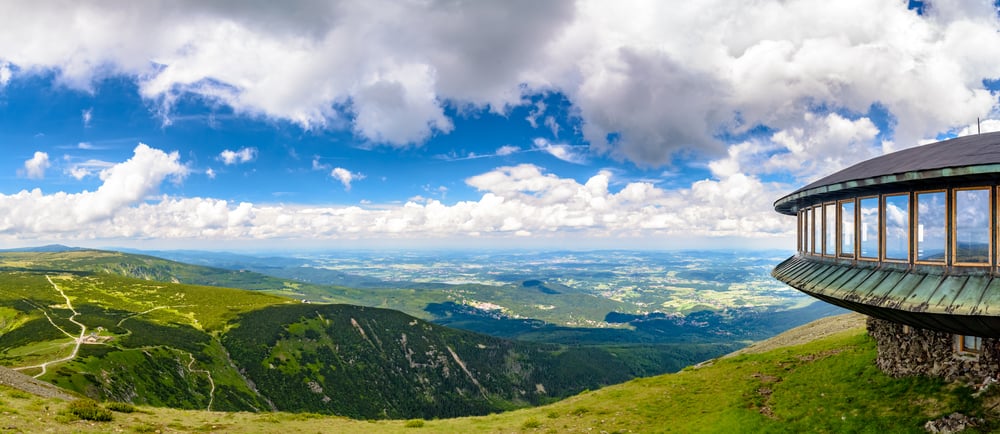
Rubbing shoulders with the Czech Republic and inhabited by mountains tenderly titled the “Miniature Alps”, Karkonosze National Park is 22 square miles of stunning, natural beauty.
Recognised as a UNESCO biosphere reserve, it supports an ever-evolving level of biodiversity.
Distinguished by glacial, mountainous cavities, sprawling spruce forests, roaming mouflons and glittering waterfalls, the charms of the park are countless.
At Sniezka’s (the tallest mountain of the range) zenith you’ll find the Polish Meteor Observatory, which promises an engaging escape from the chill as well as spectacular, panoramic views.
The park encapsulates at least 33 hiking trails covering 100km of varying difficulty and elevation levels, making it one of the most popular walkabout destinations in Poland.
13. Lublin Old Town – a gorgeous historic town
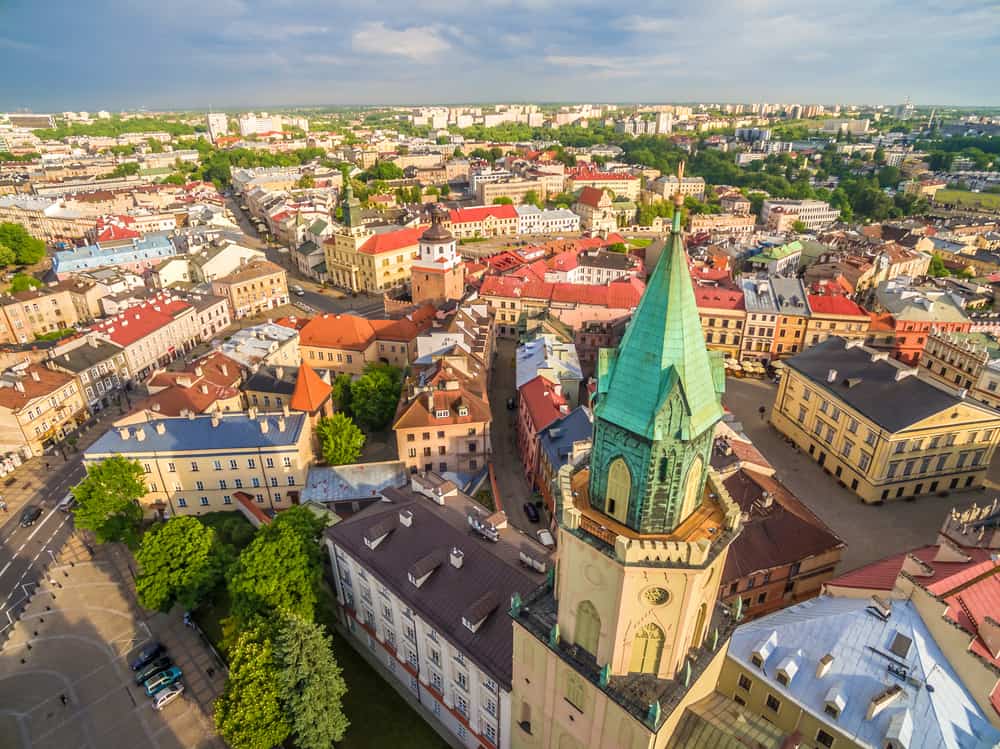
Perched amid four hills, Lublin Old Town’s narrow, cobbled streets offer up the sensation of stepping into a time warp; rich in both vitality and heritage it’s home to bundles of enticing attractions – one of which stands as the mouth to the city – the iconic Krakow Gate.
Built as part of a fortification system in the fourteenth century, the Gothic edifice has undergone many phases of restoration to maintain its resonance over thousands of years.
The Gate provides passage into the Old Town, often referred to as ‘Little Krakow’ due to its condensed, cultural treasures. From renaissance burgher houses, to an underground tourist trail consisting of old wine cellars and shop basements, to the stunning, Baroque-style cathedral, there is so much to explore.
Much of Lublin’s original structure was destroyed in World War Two, yet its medieval core was miraculously untouched, marking it as one of the most authentic and picturesque in Europe.
With students making up one-third of its population, Lublin fuses heritage with a vibrant atmosphere, securing it as one of the most characterful and underrated Polish cities.
14. Zalipie – a small ancient village in South-Eastern Poland
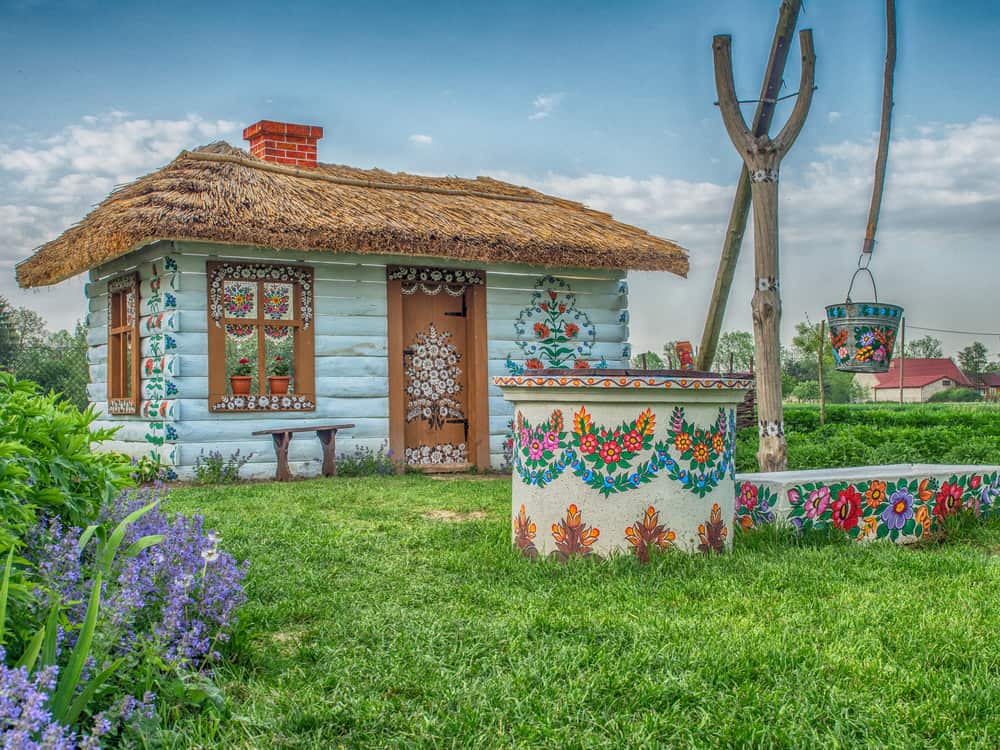
Affectionately dubbed “the Painted Village,” the picturesque Zalipie is the birthplace of an enchanting tradition; its beauty may not be carved by nature, but it is by no means any less wondrous.
Extending back almost a century, in (we assume) response to soot-stains built up by impractical ventilation, the women of the community began exhibiting a mode of self-expression as functional as it was eye-catching.
In an attempt to keep their homes looking immaculate, they crafted paint brushes from cow hair and paint from pigments thickened by fat from their dumplings, and gilded their walls with pretty, floral designs.
Now, it seems everything that stays static for long enough receives the Zalipie flower treatment: chicken coops, the village well and bridges, sun dials, dog kennels, bins – anything bare is eventually emblazoned.
One woman’s especially ornate living space has been turned into a museum to celebrate and encapsulate the artistic spirit of the village.
The tradition still thrives, most markedly in the form of an annual competition in which new paintings emerge and existent designs are rejuvenated.
15. The Bieszczady National Park – a stunning place to visit and explore in Poland
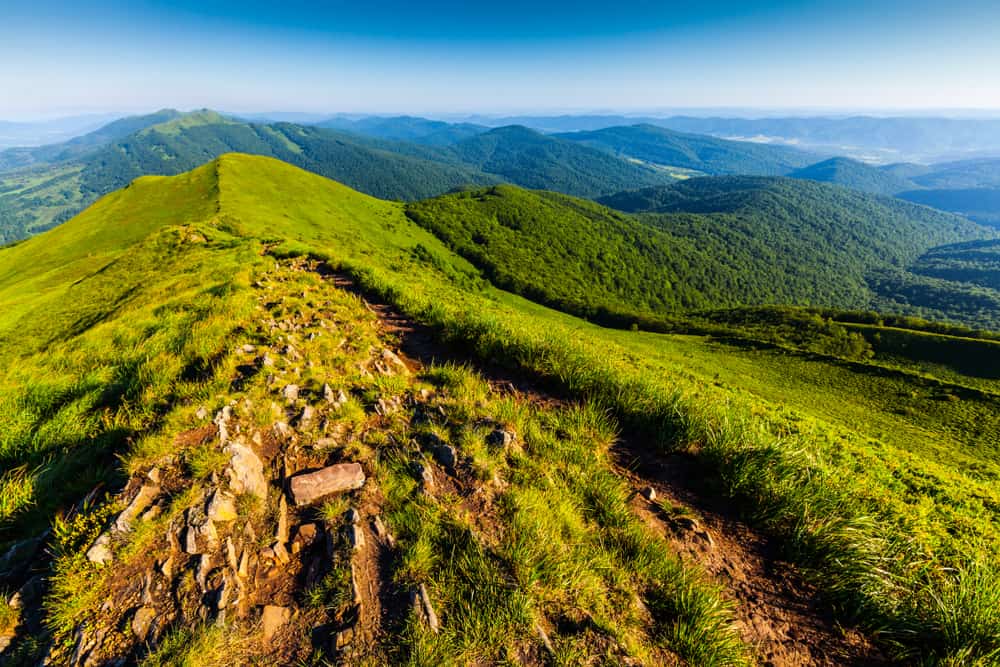
In the very southernmost region of Poland dwells an expansive treasure trove of wild beauty.
The Bieszczady National Park provides a natural sanctuary for an abundance of wildlife, including large, elusive predators such as bears, lynx and wolves as well as deer and Poland’s second-largest bison population.
Characterised by stunning pastures soaring high above the tree line of the Carpathian Mountains, the Park consists of an extensive network of trails.
However, only about 75% of the 113 square miles is accessible, as most of the land is protected. The designated hiking trails are mostly rated moderate to dangerous, so not advisable to the faint of heart!
About 80% of Bieszczady Park is shrouded in the forest – mainly beech – making it an incredible ecosystem to support the conservation and growth of its many native organisms.
Tarnica’s peak provides dazzling views of the Wolosatka Valley. One of the most unique aspects is the Podkarpackie Wooden Architecture trail; this route contains relics of pre-WWII settlements and an old, Greek Orthodox Church.
What Is The Best Time To Visit Poland?
Spring (March-May) and fall (September-November) are the ideal seasons to visit Poland. It is especially famous for its colorful springtime when nature flourishes.
Poland is a country that many people have overlooked for years, but it’s time to change that. This proud and unique country has so much to offer in terms of architecture, history, culture, and natural beauty.
The Polish countryside will fill your heart with happiness as you explore the sun-drenched fields dotted with hay bales or forests filled with ferns.
And if you’re feeling brave enough, head down south towards the Baltic Sea coast where waves crash against sparkling cliffs while seagulls soar overhead in search of food. I can’t wait until my next trip back! Have you ever visited? What was your favorite part about this beautiful land?
We also have posts on…
- The most beautiful places to visit in Hungary
- The most beautiful places to visit in the Czech Republic
- The most beautiful places to visit in Latvia
- The most beautiful places to visit in Germany
- The most beautiful places to visit in Eastern Europe
Beth was born under a wandering star, with drama in her veins and ink in her pen. After stints studying theatre in Dublin and Utrecht she used her creative streak to see as much of the world as she could on as little money. She toured Italian Schools with a children’s theatre troop, lived as an au-pair in both Rome and Washington DC, explored the British countryside, worked her way through much of Europe, Salsa danced in Cuba and road tripped down America’s west coast where she discovered her spiritual home; Portland, Oregon. In between adventures she resides peacefully with her family, cats and ukulele.


O.M.G.
It is incredible to know that a country has so many, literally so many shades of its own! Beautiful peaces, historical buildings, national parks, some amusing villages, castles, lakes and so much more! If I ever visit this beautiful country, I would definitely refer to this post. Just imagine how aesthetic one’s pictures would come in a country full of beautiful spots! One can also do like a photo-shoot wearing old fashioned gowns near the historical castles or the small villages here.
Hey Alisha, thank you for sharing your experience. No doubt, Poland is a beautiful country in Central Europe.